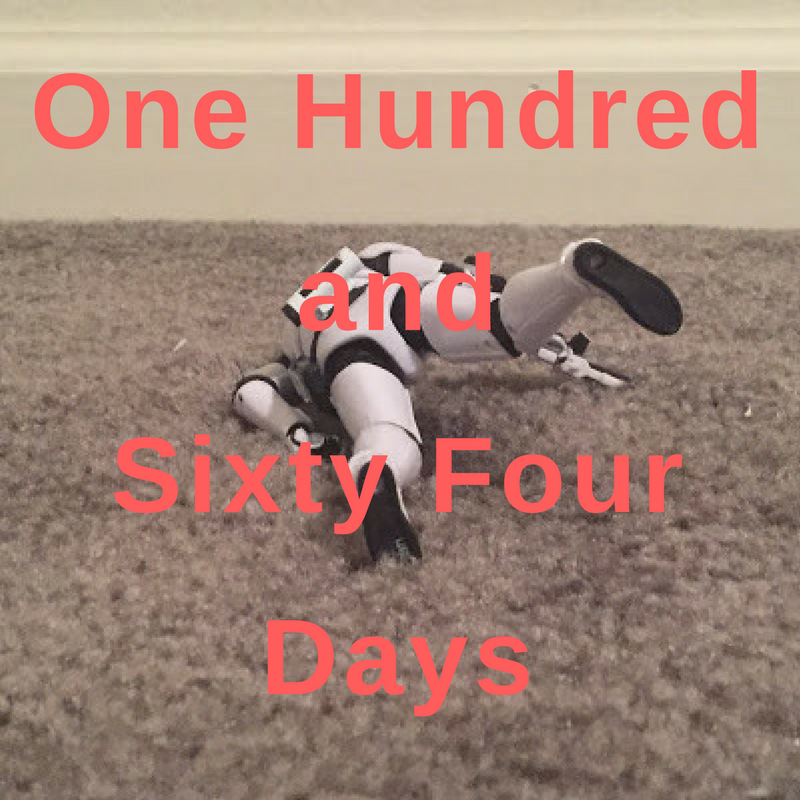
Considering the hazards inherent in writing a character like the Punisher, it's curious that Marvel has managed, for the most part, to avoid turning him into the kind of noxious right-wing caricature for which he could easily be mistaken. That the Punisher has been traditionally embraced by certain sections of the right is no surprise, but for much of his existence the stories themselves have gone to great lengths to draw a more nuanced picture.

Garth Ennis is responsible for two of the character's great defining runs - reinventing the Punisher once as pitch-black comedy and then again as a dead-serious crime book with political overtones. In both instances Ennis saw the Punisher not as a mouthpiece but as a cautionary tale. The best Punisher stories often highlight precisely why the Punisher is not - or at least, should never be - a wish-fulfillment character. He's the exception that proves the rule. No one should want to be the Punisher, and we should understand exactly why - even if we may receive a fleeting twinge of satisfaction from seeing Frank annihilate the drug dealers, rapists, and mass murderers of the world - he represents an inherently destructive and untenable moral infection in the body politic. He's a right-wing revenge fantasy as it might have been designed by left-wingers who understood the precise limitations of the type.
(Of related interest: I wrote about this subject back in 2009 in reaction to the Watchmen film, and my opinion on what Snyder got right about the character of Rorschach and vigilantes of this type, even in the context of a film that got so very much wrong.)
My favorite Punisher will always be Mike Baron's Punisher. It's an interpretation of the character that has mostly gone out of fashion, less the rugged sociopath and more the super-competent anti-hero of men's adventure novel series like The Destroyer. Baron's Punisher was a wry globe-trotter, an intelligent and articulate vigilante with a dedication to retribution, not merely vengeance (which are not synonyms). His actions were still, of course, morally repugnant, but the stories took place in a universe that acknowledged that the Punisher was on the wrong side of the law and existed primarily in dialogue with - and as a foil, not a corrective - to more traditional superheroes like Spider-Man and Batman. This despite legions of literal-minded fans arguing the contrary, largely in contradiction to the stories themselves.
The most recent Punisher series, written by Nathan Edmondson, comes down on the wrong side of this argument. From the very beginning the series has presented a version of Frank Castle directly at odds with much of his previous 40 years of established characterization. In doing so, Edmondson has highlighted just how well previous generations of Punisher creators - men and women on both sides of the political divide, it should be emphasized - have dealt with the challenges and pitfalls inherent to such an essentially problematic character.

This is a page from the third issue of The Punisher (2014) by Edmondson and artist Mitch Gerads. If you aren't familiar with the Punisher, it might not immediately occur to you as to just why this passage is so problematic, fitting as it does nicely into current political arguments regarding gun rights and the philosophy of self-defense. But for anyone who does have experience with the character, it should jump out as immediately problematic.
The Punisher is not, and has never been, portrayed as reflexively pro-gun. On the contrary, despite the history of the character as someone who fetishizes firearms and other weapons of war - even to the point of having had a series devoted specifically to his weapon collection - he's always taken great pains to illustrate the principle that guns belong solely in the hands of trained professionals. The Punisher - as an ex-Marine - reveres soldiers and police officers. He doesn't shoot cops, and even crooked cops have traditionally been a blind spot. On the contrary, one of the most frequent tropes in the Punisher's history is his disapproval of copycat vigilantes and bloodthirsty fanboys. The stories themselves bend over backwards time and again to show that the Punisher is an exceptional case, and every other example of a proactive vigilante figure is a negative one. Even on those rare occasions where Frank takes a protege, it's always temporary, as even the most well-intentioned followers inevitably fall short of his standards.
For an illustration of this concept, take this page from the aforementioned Punisher Armory, issue #4 (1992), by Eliot R. Brown. This series comes in for a lot of criticism, almost all valid, but just look at how different the conversation over the Punisher's firearms usage was just 23 years ago.

Here's the text in a larger format:

Here's another editorial from Brown, this time from issue #6 of the same series:

Although I don't doubt (based on his enthusiasms, if nothing else) that Brown and I differ considerably on politics, I think this is nevertheless as good and defensible a description of the Punisher's rationale as you're likely to find. It's maybe fun - or at least cathartic - to imagine a world in which an extra-legal vigilante such as the Punisher can effectively operate, just one step further down the slippery slope that characters like Batman always manage to negotiate. But we don't live in such a world. We live in a world of laws, lawyers, and juries, and as imperfect as that system is it is nevertheless better than any alternative. In reality, the Punisher could never be as perfectly unerring as he is presented. Because of his superhuman competence - never making mistakes, always keeping to his primary objective with a laser-like focus - the Punisher is pure fantasy, and should always be regarded as such.
The Punisher doesn't exist to highlight the ineffectiveness of law enforcement, which is precisely the kind of right-wing fantasy Edmondson's current run seems to be asserting. For the Punisher to state that only fools place faith in the government's ability to protect them undermines the character in the most profound way. For decades the Punisher has consistently maintained that guns are dangerous and belong only in the hands of trained professionals. If there is one thing he hates as much as drug dealers, its incompetency (hence his distrust of amateurs such as Spider-Man and Daredevil). Seeing guns in the hands of millions of improperly trained paranoids, marching under the banner of a fundamentally misguided belief in self-defense as an absolute right, goes against everything the character represents, and everything that makes the character at all defensible even as a kind of fantasy. The necessary element to any fantasy, after all, is the acknowledgment of impracticality.
Elsewhere in the pages of the Armory, Brown spends a great deal of time talking about gun control in what was - for 1992 - a remarkable even-handed way, as someone who was a self-admitted (though not without reservations) member of the NRA. While it would obviously be a mistake to read Brown's words as the Punisher's, I think Brown's ideas represent what was at the time considered to be a fairly orthodox interpretation of the character, which itself represented what was (at the time, remember this was over two decades ago) a fairly centrist position on guns. That is: guns are legal, and as long as we have private gun ownership the only people who should have guns should be people who use them in an educated and responsible manner. The familiar analogy to car ownership is made more than once. The Punisher doesn't want more people to have guns. The idea that he would encourage citizens to take up arms in the face of police indifference not only flies in the face of decades of characterization, it takes what has traditionally been the character's unexpectedly nuanced ideology and demolishes said nuance in favor of signaling allegiance with precisely the kind of uninformed and dangerous political program to which he could never cosign, precisely because of its potential for unanticipated collateral damage. Where others see ideology, he sees practical consequences.
To put it another way: the Punisher represents the apex of conditional morality. That is, he acts selfishly, rationalizing his actions as the end result of certain specific conditions that dictate his specific actions. He could never endorse anything resembling a categorical imperative. He would never assert that every person who has lost a loved one to violent crime should act as he does by taking the law into his own hands. Rather, his existence is predicated on the necessary condition that his exception can only remain a singular exception. To do otherwise would undermine the illusion of ethical exceptionalism that provides his rationale. In the context of a Punisher story, it is a given that he is the smartest guy in the room, able to see every angle, to have answers for every conceivable problem, to ensure that bullets only go where he wants them to go. He can't cede that respect to anyone else, and neither can the story itself - lest the mere existence of the Punisher become license for negative anarchy. If Edmondson's interpretation of the character becomes the new standard, then he has finally and irrevocably become the indefensible right-wing paranoid fantasy his critics have always projected, but his creators often resisted.
Another essential part of the Punisher's mythology is his status as a Vietnam vet. This is part and parcel of his status as a creature of the 80s - even if he was born in the 70s, he could only have rose to prominence in the context of a culture then in the throes of systematically rejecting the narrative of American failure that arose as a direct response to the war. But again, the Punisher is rarely used as a mouthpiece for the kind of betrayal fantasies so prevalent among the right - the proverbial "stab in the back" myth that posits that the American military can only fail if undercut by domestic infidelity. (This is the kind of thinking that leads to the belief that government conspiracies are afoot to deny the truth about fallacious POW / MIA numbers, for instance.) Rather, the Punisher is most often used as an example of a particular left-wing narrative of the Vietnam period, a narrative that posits that American soldiers were betrayed by a government that used them poorly as collateral in an futile war fought primarily at the behest of defense contractors and misguided ideologues. Although this was a persistent theme of Ennis' run on the character, this is a part of his background going as far back as, again, the Armory series, this from issue #8 (1993).

(Again, though, note the presence of the MIA tag alongside the statement of the war's futility.)
Therein lies the crucial difference between the Punisher as initially conceived and developed, and the character as he exists now. By necessity, considering the character's age, his roots in Vietnam have been scrubbed. Now he's a veteran of one of the recent Gulf wars (the stories themselves being, I think, intentionally vague on this point). And right now in American culture there exists a sharp and contentious divide between those who celebrate these wars unconditionally as exemplars of American heroism, and those who regard the whole enterprise with sharp skepticism. The culture that promotes the likes of Chris Kyle will have no problem lionizing a character like Frank Castle as the patron saint of the "Righteous Kill," as opposed to a cautionary tale of an already-damaged human being destroyed by the trauma of a tragically unnecessary conflict.
It's the difference between defining a hero as a someone who takes on the responsibility to do the worst regardless of personal cost, or as someone who takes on the responsibility to do the best regardless of the difficulty. The Punisher has never been a hero, but he's often been an interesting character. Making him a hero renders him uninteresting in the most ugly and banal way conceivable.






























